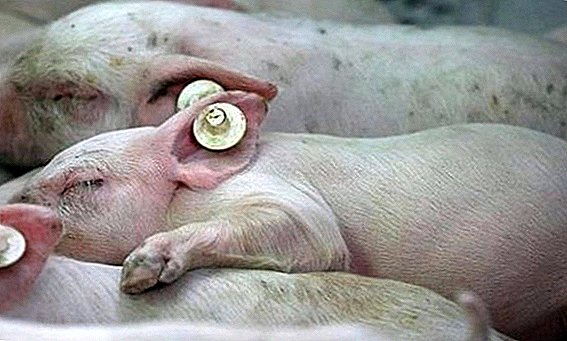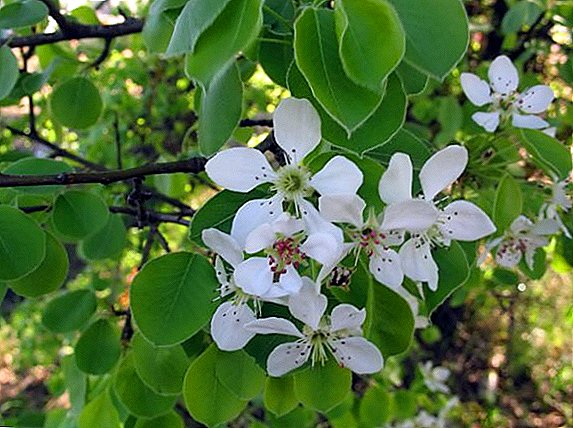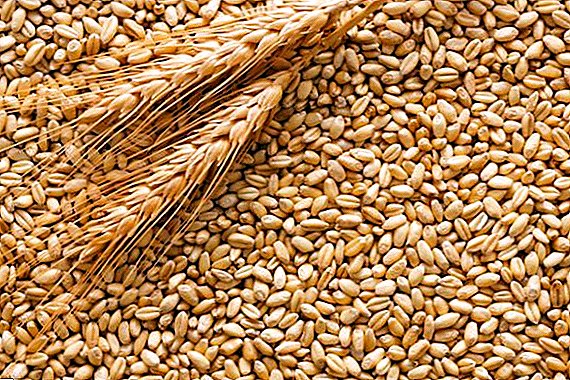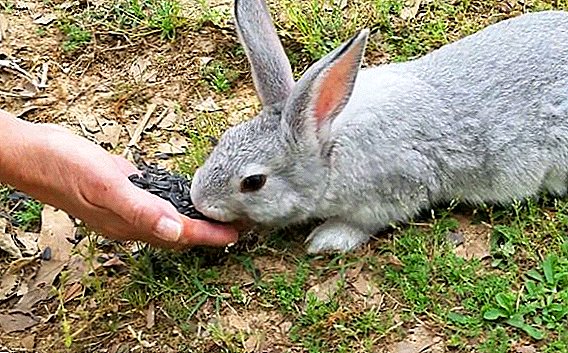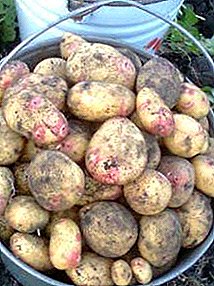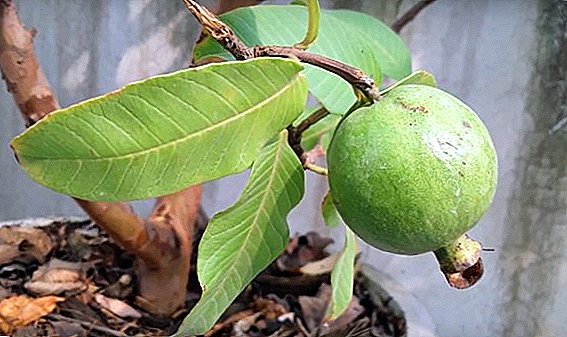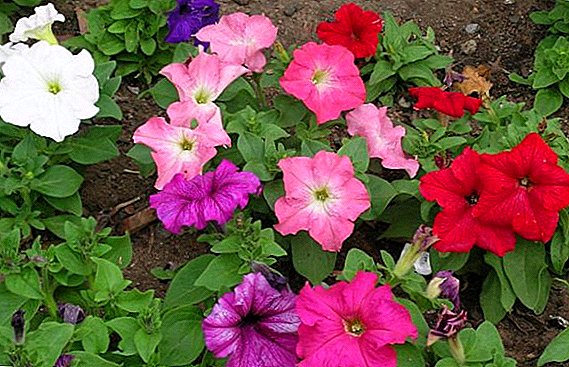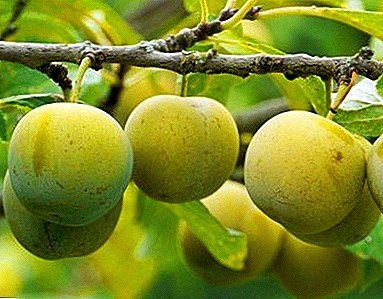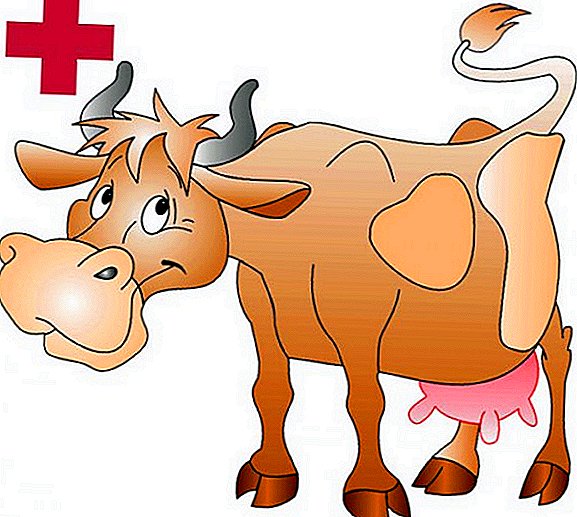 Mastitis is a very common disease of cows. For farmers, this is a big problem, because milk becomes unusable.
Mastitis is a very common disease of cows. For farmers, this is a big problem, because milk becomes unusable.
This article focuses on this disease and how to treat mastitis in a cow.
General description of the disease
This disease occurs in cows at the time of carrying a calf or during lactation. This disease is very dangerous for cows and proceeds hard physically.
The animal constantly feels a pain, there is a fever. The offspring of such a cow usually brings a weak, and most often calves die.
There are several reasons that cause this disease:
- violations of animal health standards;
- poor hygiene during milking;
- injuries and damage to the udder;
- hypothermia or burns;
- if the calving was heavy;
- effects after insect bites;
- hit of staphylococcus or Escherichia coli;
- accumulation in the body of drugs.
Important! A cow that is sick must be isolated from the herd.
Types of mastitis
Mastitis in cows is of different types, therefore, the treatment is also different.
Subclinical
This form of mastitis is dangerous because all the symptoms of the disease are absent, but the infection is actively developing at this time. This form is also called hidden mastitis. It is possible to identify the disease only by constantly checking the flora of the milk produced. If not detected in time, then this form will go to the clinical.
Serous
This type of mastitis occurs after calving an animal. Udder hardens, swells and blushes. During milking, the animal behaves restlessly. The volume of milk becomes smaller, and it loses fat. It is necessary to treat this form immediately, until it has turned into a chronic one.
Learn more about what diseases can hurt cows and how to treat them.
Catarrhal
Young individuals are most susceptible to this form of the disease. Manifests such a disease after calving. A seal appears in the udder, and after a few days it can be felt at the tips of the milkings. Milk quality is getting worse, but the cow is calm with this form of mastitis. Milk loses fat, and clots appear in it.
Fibrous
This type is considered the most dangerous. The temperature of the animal rises, part of the udder is compacted and sore. From the nipples can stand out ichor. Udoi significantly reduced, and after a few days lactation stops. Milk formation is very difficult to recover after such a disease.
Purulent
The condition of the animal is deteriorating. The cow refuses food, breath and pulse become frequent. From the nipples stands out pus. In the part of the udder that is affected, gangrenous tissue damage occurs. A cow after this form of mastitis lactation may stop if you do not start treatment in time.
You also need to monitor the condition of the hooves of your cattle, because they can also hurt.
Hemorrhagic
The hemorrhagic form of the disease is a consequence of serous or catarrhal. Milk contains blood and flakes. In cows, the entire udder is affected, the nipples swell and swell, the lymph nodes are enlarged. The animal loses its appetite, the temperature rises, breathing quickens.
It will be helpful for you to read about the causes of udder swelling in cows and proper treatment of the disease.
Main symptoms and diagnosis of the disease
To diagnose mastitis, you need to take cow's milk for analysis. This procedure should be carried out every month. Diagnostics can be carried out in the laboratory or at home. To do this, you must purchase milk-control plates (MKP-1 and MKP-2) and 5% solution of dimastine.
1 ml of milk from each nipple is decanted into the cells and 1 ml of dimastine is added. Over the course of 15 minutes, the content should change color and texture. 
From these results, conclusions can be drawn:
- negative result - fluid homogeneous and orange;
- positive result - the liquid coagulated into a clot and turned crimson.
Important! AT The first drops of milk contain many bacteria - this is considered normal. They need to be decanted into a separate container before taking the analysis.
Treatment of mastitis in cows
For the treatment of this disease there are many ways and drugs. With such a disease affects not only the udder, and the animal as a whole. Therefore, it is best to apply a complex therapy that will restore the mammary gland and the body of the cow.
Basic principles
The basic principles of complex therapy:
- start the disease can not. Treat immediately after the occurrence of mastitis;
- follow a rational mode of feeding and milking;
- regardless of the form of mastitis, you must try to completely exempt the mammary gland from the pathological secretion;
- in the initial stages it is advisable not to use antimicrobial agents and antibiotics;
- if the disease is severe, it is imperative to introduce heart and tonic;
- sick animals must be milked by hand every 4 hours;
- from the diet to exclude succulent feed and fully translate into hay and food containing fiber;
- if there is no pain in the udder, it should be lightly massaged 2 times a day;
- there should be no drafts, and the litter should always be dry;
- You can strengthen the body with vitamins;
- use only disposable syringes and catheters;
- it is impossible to warm up the udder, because microorganisms reproduce in such favorable conditions;
- All used ointments, compresses should be at room temperature.
Did you know? On average, the udder of the cow contains about 15 liters of milk.
Drugs for treatment
Antibiotics give a good effect in the treatment of mastitis. But after using them, milk should not be consumed for a month.
For serious forms of the disease, Novocain is injected intravenously at an animal of 0.25%. For its preparation using isotonic sodium chloride solution (1 l per 1 kg of cow weight). It is also necessary to rub camphor ointment into the udder.
Such drugs are very actively used: Masticid, Mastisan, Penersin. Using sterile catheters, they are inserted into the udder. Treat for about 4 days. On the 5th day milk can be consumed.
Also treated with mastitis gel, which contains aloe juice. It is inserted into the nipple with a syringe or catheter. Aloe has an antibacterial effect and reduces inflammation.
You can also enter a 1% streptocide solution (400 ml every two days).
Part of the udder, which is affected, washed with a decoction of nettle. For the treatment of fibrous and catarrhal mastitis, clay applications give a good effect. Mixing red and white clay with the decoctions of plantain, nettle and yarrow, it is necessary to smear the udder for the night. In the morning, wash off the infusion of nettle.
Did you know? According to statistics, cow milk production exceeds 400 million tons per year.
Preventive measures
To avoid such diseases as mastitis, it is necessary to observe some preventive measures:
- before you milk a cow, you need to wash your hands well;
- be sure to wash the udder before each milking;
- the room containing the cow must be clean and dry;
- To raise the immunity of the animal, it is necessary to add enzymes and probiotics to the food;
- for the prevention of mastitis, you can use the drugs "Uberol" and "Mastiprotekt";
- after calving let the calf suck all the colostrum and milk;
- udder should be handled with care, without rudeness;
- milking should be carried out at the same time.



